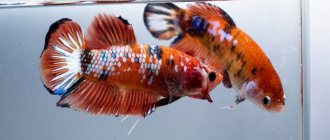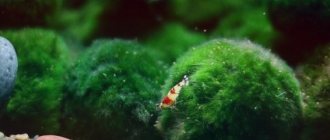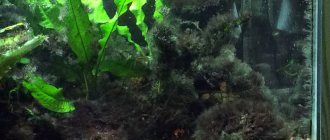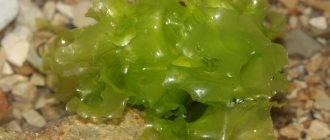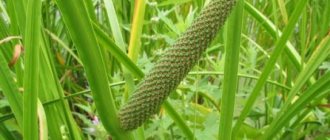Spirogyra habitat
Spirogyra is one of the most interesting representatives of the Zygnemaceae; its genus is filamentous green algae. If you take the whole Earth, carefully examine the most remote corners, it will not be possible to find a more widespread algae than spirogyra.
To find out Spirogyra's habitat, look at the list below, which lists everything the algae loves:
- Reservoirs with fresh water, ideally standing water, but a slight current is allowed;
- The bottom of reservoirs where the current is least pronounced.
More than 200 species of spirogyra are known to botany, and 120 can be found in Russia.
Spirogyra: what is it and how does it threaten Baikal
How is it dangerous for the ecology of Lake Baikal?
1. Displaces Baikal endemics.
Due to the large amount of flowering filament at the bottom of the lake (spirogyra was found even at a depth of 40 meters), some types of microorganisms are forced out. For example, the indigenous inhabitants of Lake Baikal are gastropods. After Spirogyra appeared in the lake, their number decreased significantly. It destroys endemic Baikal sponges, thanks to which the water in the lake remains crystal clear. It also occupies the spawning grounds of the yellowwing goby, which the Baikal omul feeds on.
2.Poisons the water
In some areas, the shores of Lake Baikal are covered with a thick layer of rotted spirogyra. This significantly affects the quality of water - it becomes unsuitable for consumption by people and animals. It takes a lot of effort to clear the beach of algae. You have to dig almost 30 centimeters deep. Fishing also becomes almost impossible. Thick mud fills boats and nets.
Today, scientists from the Limnological Institute of the SB RAS are actively studying the Baikal Spirogyra. So far, researchers have not come to a consensus whether Spirogyra poses a real threat to the lake or whether the listed consequences are the result of a combination of many factors. But already now the adverse consequences of the spread of algae are obvious.
What is the reason for the spread of filamentous algae?
Some believe that the reason for the proliferation of Spirogyra was the favorable warm weather conditions that characterized one of the seasons on Lake Baikal. However, with the onset of cold weather, the amount of filament did not decrease at all. Ice water did not prevent the formation of a thick green veil on the lake.
Others associate the flooding of water with spirogyra with a sharp deterioration of the environmental situation in the Baikal region. The treatment facilities installed in the surrounding areas are long outdated and cannot cope with their task. The equipment needs urgent modernization.
In addition, from year to year, environmental problems are aggravated by illegal landfills and illegal developments. Tourism infrastructure and the private sector also have an adverse impact on the already deteriorating situation.
What to do?
How can we help the cleanest lake on the planet not turn into a dirty swamp?
To do this, it is necessary to carry out a number of large-scale actions inside the Baikal basin:
• Completely eliminate waste flow into the lake. It is necessary to build a so-called water cluster, which will collect waste from organized piers and ships. Sewage, all food waste and dry garbage will pass through it.
• Create And also completely prohibit the use of all kinds of detergents containing phosphates on the territory of Lake Baikal. Synthetic substances have a detrimental effect not only on the environment, but also on human health.
• Develop ecological rather than commercial tourism. Currently, the interregional public organization “Great Baikal Trail” is actively developing a system of unique routes and ecological trails, walks along which are accompanied by cleaning of the territory. Anyone can join the volunteers and contribute to its development.
Biological features of Spirogyra
Having found out where Spirogyra lives, let's move on to considering the biological characteristics of organisms. Spirogyra itself is close to higher plants, despite this, its body is simple, and its vital functions are not complicated. It is a collection of the finest threads that form a structure that looks like lumps. Such organisms can cover the entire surface of a reservoir.
In some cases, algae even lives in artificial reservoirs and swimming pools, resulting in the need for regular cleaning. Spirogyra loves light very much. Therefore, to combat algae, some resort to artificially limiting lighting. The measure can be effective, but it cannot always be implemented in home aquariums. Algae are autotrophs and can feed exclusively through photosynthesis.
What are chromatophores in biology
The cells of living things contain various organelles (organelles) that have different functions. Chromatophores are cell organelles located in the cytoplasm and impart color to it. You can call all cell organelles that have color this way, but this term is assigned to colored bodies in algae cells. Similar formations in higher plants are called chlorophyll grains and chloroplasts.
Sometimes chromatophores are called algae chloroplasts. But it should be noted that fish cells containing color pigment are also often called chromatophore, although they have nothing to do with plants. It is also found in some other animals and photosynthetic bacteria.
There is another way to explain what a chromatophore is. In terms of their structure, chromatophores are plastids. As you know, plastids are the organelles of plant cells that have a smooth membrane on the outside and a membrane on the inside that forms outgrowths. Leucoplasts, chromoplasts and chloroplasts are classified as plastids. In turn, the chromatophore, as a formation similar to a chloroplast, also belongs to plastids.
Reproduction of Spirogyra
Since there are many species of spirogyra, the mechanisms of reproduction differ. The vegetative method involves reproduction as a result of damage or rupture of a single thread. Separate segments are formed, each of which turns into a completely independent organism.
Spirogyra breeding scheme
The sexual method is more complex. If two threads appear side by side, copulation outgrowths appear from the walls, with the help of which a common channel is formed. This phenomenon is called Spirogyra conjugation or Spirogyra sexual reproduction. As a result, a zygote is formed, from which a new independent organism emerges.
Brief description of Spirogyra reproduction
General information about algae
Algae are unicellular and multicellular, and there are also colonial forms. Some have no cell membrane, but only a compacted layer of protoplasm. This allows the algae to change shape. Other algae have a dense shell with a high cellulose content, and in some it is even impregnated with minerals - lime, silica.
Algae cells can have one or several nuclei, or they may not have a formed nucleus at all. Then the protoplast has a noticeable color, but its center is not colored.
In some representatives of algae, the coloring pigment is contained in chromatophores, which usually contain pyrenoids (dense bodies with a high protein content), and starch reserves are deposited around the pyrenoids. The type of nutrition of most algae is autotrophic (due to the energy of light penetrating through the water column).
Life cycle of Spirogyra
In autumn, Spirogyra begins to reproduce. Conjugation (sexual reproduction) occurs, after which a diploid zygote is formed, which is surrounded by a dense membrane. Then the zygote divides by meiosis, forming 4 cells, of which 3 die. The remaining cell grows into a Spirogyra filament. This cell carries a haploid set of chromosomes, and therefore is capable of mutation. A new spirogyra grows and the process repeats again.
Spirogyra
A representative of multicellular forms of the class Conjugates (Conjugatophyceae, Zygnematophyceae) can be the filamentous algae spirogyra (Spirogyra). It is one of the most common filamentous algae in our country and has about 275 species. Spirogyra is found in streams, rivers, ponds, lakes and forms clusters of threads that feel slimy to the touch. Large spirogyra cells (Fig. 224) have protoplasm located in a wall layer. In the protoplasm there is a chromatophore in the form of a spiral ribbon encircling the entire cell. Sometimes there are several of these spiral ribbons. The chromatophore contains a large number of pyrenoids. In the center of the cell there is a nucleus suspended on protoplasmic filaments extending from the wall layer of protoplasm. The middle of the cell is occupied by vacuoles with cell sap.
| Rice. 224. Spirogyra cell: a - chloroplast; p - pyrenoid; in the center the core |
All spirogyra cells are capable of division. Their division occurs in the summer, one to two hours after sunset. First, the nucleus divides, then a transverse partition is formed, dividing the chromatophores into two halves. Conjugates lack both aplanospores and typically expressed gametes.
Reproduction is carried out by the above-described cell division and breaking of the filaments into separate multicellular sections.
The sexual process occurs in the form of so-called conjugation . The two filaments of Spirogyra become parallel to each other and move closer together. In the cells of neighboring threads, outgrowths appear that grow towards each other (Fig. 242). After the closure of the outgrowths, their shell dissolves and a channel is formed through which the contents of one cell, separated from the shell, flow into another cell. Protoplasts fuse and form a zygote. This sexual process is called scalariform conjugation . The zygote is covered with a thick shell and after a period of rest (overwintering) it germinates. The first division of the zygote is reduction. Of the four cells that arise, three die, and the fourth forms a seedling, which emerges outward during germination.
Spirogyra belongs to the order Zygnemales. In addition to Spirogyra, this includes the widespread Zygnema , the cells of which have two star-shaped chromatophores (Fig. 243, 1). Material from the site https://worldofschool.ru
| Rice. 242. Spirogyra. Conjugation: a - male cell; b - female cell; c - copulation channel; d - transfusion of the protoplast of a male cell into a female one; e - place of fusion of two protoplasts; e - zygote; g - the beginning of the formation of population growth |
| Rice. 243. Zygnema and desmidian algae: I. Zygnema. 2. Cosmarium, cell division. 3. Micrasterias |
On this page there is material on the following topics:
Brief information about Spirogyra
Origin of Spirogyra
Spirogyra nutrition
Spirogyra nutrition
Spirogyra. role of nature
Chromatophores in animals
In animals, chromatophores are melanophores (not to be confused with human melanocytes, these are completely different cells). Both names are used.
They are involved in color changes under the influence of external factors. The ectoplasm of the chromatophore, which determines its shape, is attached to solid formations - fibrils; it is involved in the regulation of metabolic processes, and can also come into contact with the nervous system, as a result of the receipt of signals from which the chromatophore begins to function differently. Of all the chromatophores, only melanophores have nerve endings.
Thus, many species of animals are known that are capable of mimicry - changing color depending on the background and surrounding objects. Slow color changes are characteristic of the caterpillars of some butterflies and a number of arachnids. In cephalopods, amphibians, reptiles and crustaceans, rapid changes in color occur through the movement of pigment grains in chromatophores. The range of colors can be varied. For example, one of the African frogs can change color to white, yellow, orange, brown, gray, red, pink and others. The well-known chameleons have the same mechanism for changing color.
Chromatophores in fish
Unlike other animals, the change in color of fish is due to a change in the number of chromatophores. This occurs not only under the influence of nerve signals, but also with the participation of hormones. Most likely, it depends on the specific situation, and under different conditions, either nervous or hormonal regulation occurs.
Fish such as gobies or flounder can exactly copy the appearance of the ground. In this case, the main role belongs to the nervous system. The fish perceives the ground pattern with the help of its eyes and this picture, transforming into nerve signals, enters the nerve “network”, from where signals go to the nerve endings of the melanophores. The color change occurs unconsciously, with the help of sympathetic nerves.
The hormonal effect is noticeable during spawning - the period when fish are ready to reproduce. Sexually mature males, under the influence of hormones, acquire colors that are attractive to females. It becomes brighter when the female comes into view. Here the mixed action of the hormonal and nervous systems is manifested: when the male sees a female, the signal enters through the optic nerves into the nervous system, and then to the chromatophores, which, expanding, make the color brighter.
It should be noted that, in addition to melanophores, fish also have other chromatophores - guanophores. However, they can be formally classified as chromatophores, because instead of pigment grains they contain the crystalline substance guanine, which gives the fish a shiny silver color. From melanophores, xanthophores and erythrophores are sometimes also isolated.




